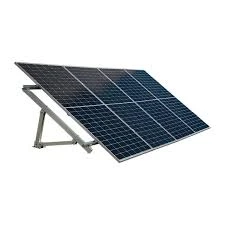monofacial vs bifacial solar
Monofacial vs. Bifacial Solar Panels A Comprehensive Comparison
As the world shifts toward renewable energy sources, solar power continues to gain prominence. Advances in solar technology have led to various types of solar panels, each with distinct functionalities and advantages. Monofacial and bifacial solar panels represent two of the most popular options available today. This article examines their key differences, advantages, and practical applications, helping you understand which might be the better choice for your energy needs.
Understanding the Basics
Monofacial Solar Panels are the traditional type of solar panels designed to capture sunlight on one side only. They consist of a single layer of solar cells mounted on a backing material. Typically, these panels are installed where they can receive direct sunlight.
On the other hand, Bifacial Solar Panels are engineered with solar cells on both sides, allowing them to capture sunlight from both the front and the rear. This design can enhance their energy output by utilizing sunlight that reflects off surfaces such as soil, sand, or concrete.
Energy Efficiency
One of the most significant distinctions between monofacial and bifacial panels is their efficiency in energy production. Bifacial solar panels can produce more electricity than their monofacial counterparts under the right conditions. Studies have shown that bifacial panels can generate anywhere from 10% to 30% more energy, depending on factors such as the reflectivity of the surface beneath them and the angle of sunlight.
This higher energy yield makes bifacial panels particularly attractive for large solar farms and utility-scale projects where maximizing output is crucial. However, these benefits may not be as pronounced in residential setups where the surrounding conditions may not effectively reflect sunlight.
Costs and Installation
While bifacial panels present compelling advantages in efficiency, they are generally more expensive upfront compared to monofacial panels. The additional cost for bifacial technology may include installation considerations, as they often require a more sophisticated mounting system that allows sunlight to reach both sides of the panel.
Additionally, monofacial panels are simpler to install and can be more cost-effective in certain applications
. For homeowners and small businesses, the lower initial investment associated with monofacial panels may outweigh the potential benefits of bifacial technology.monofacial vs bifacial solar

Durability and Lifespan
Both monofacial and bifacial solar panels are designed to be durable, with typical lifespans ranging from 25 to 30 years. However, there are differences in their design that may affect their longevity. Bifacial panels often utilize higher-quality materials and construction techniques, which can enhance their resilience to environmental factors like hail, snow, and high winds.
Moreover, many bifacial panels feature anti-reflective coatings and enhanced durability, which may provide added protection against wear and tear over time. This can make them a more investment-worthy option in locations subject to harsh weather conditions.
Aesthetic Considerations
Aesthetics can play an important role in choosing solar panels, especially for residential applications. Monofacial panels are generally more discreet and widely used in traditional installations, making them blend well with rooftop designs. On the contrary, bifacial panels can sometimes appear bulkier and more complex due to their dual-sided nature. This might be a concern for homeowners prioritizing a clean visual impact.
Environmental Impact
Both types of solar panels contribute positively to environmental sustainability by harnessing renewable energy and reducing reliance on fossil fuels. However, the increased efficiency of bifacial panels can lead to greater energy production from the same land area, thus decreasing the total environmental footprint per unit of energy generated.
Conclusion
Ultimately, the choice between monofacial and bifacial solar panels depends on various factors including budget, installation location, and energy needs. For those looking for a cost-effective solution with proven technology, monofacial panels may be the way to go. Conversely, bifacial panels present an exciting opportunity for maximizing energy output, particularly in large-scale applications where their advantages can be fully realized.
As solar technology continues to evolve, potential users should stay informed and consider local conditions, installation constraints, and long-term energy goals when selecting the ideal solar panel solution for their specific needs. Both monofacial and bifacial panels represent significant advancements in solar energy, and choosing the right one can lead to a more sustainable future.
-
Understanding the Advantages of Solar String Inverters for Your Energy SystemNewsApr.29,2025
-
Choosing the Right PV Inverter: A Comprehensive GuideNewsApr.29,2025
-
The Future of Solar Power: Exploring Bifacial Solar PanelsNewsApr.29,2025
-
The Complete Guide to Solar Panels: Efficiency, Cost, And InstallationNewsApr.29,2025
-
The Best Options for Efficiency and Cost-EffectivenessNewsApr.29,2025
-
Harnessing the Power of Off-Grid Solar Inverters for Energy IndependenceNewsApr.29,2025







